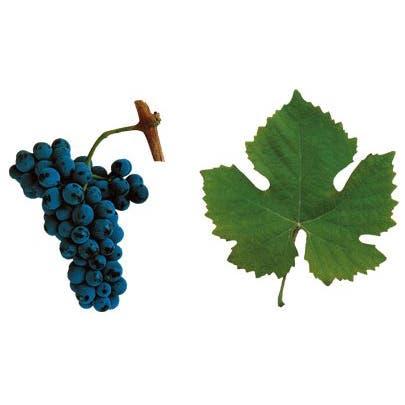
There’s a decent argument that anyone planting significant quantities of touriga nacional has rocks in their head. It is a challenging beast to grow and market and in the vineyard it is both vigorous and difficult to ripen. It has a high skin to juice ratio, so the harvest seems to shrink as it passes through the crusher. Also, Australia is already blessed with grenache and shiraz, each of which can each produce exceptional examples of rose, red and fortified.
Happily, drinkers are embracing new flavours and textures. Old Mill Estate is listening, fashioning cutting-edge pink and black wines from the variety. Evidence from the recent vintages also suggests that touriga has good potential as a climate change variety. At the very least, Old Mill have demonstrated that touriga is ready for us!
Getting fired up for Touriga
Old Mill Estate’s Peter Widdop says ‘There was no bolt from the blue - Stuart (Blackwell) from St Hallett wanted us to plant a bit for him - about 5 acres, but we put in 15. I tasted their first touriga rose in tank and thought beauty! I could have sat there drinking out of the tank all day.’
Branching out
‘With a few vintages of rose under our belt, we thought we’d have a go at making a red. Early results are very promising. Touriga tends toward massive fruit and tannin weight but can equally be supple and approachable as a young wine so long as it is not excessively oaked.
Old Mills Touriga is an excellent wine. In spite of the big tannins it’s light on its feet and quite graceful. On the nose it offers an explosion of Chinese spice and blueberries- quite unlike any other Australian red I’ve encountered. As the wine crosses your tongue it tapers and refines slowly as though the wines strident nature is changing as it slides across your palate. This wine is a pleasure to drink now and suits a range of dishes, particularly antipasto and chargrilled meats.
As a fortified – Touriga ‘the contender’
I asked Peter about his next release, a fortified, currently brewing in barrel and he said ‘Quite a lot of Aussie winemakers have experimented with using Portuguese varieties in fortified wine production. The most profound of these is touriga nacional, which is what we’ve got in the ground at the moment. We’re considering planting a bit of touriga francesca too; it’s a bit lighter bodied and has even more exaggerated aromatics.’
The Old Mill Fortified is more restrained than most Aussie VP styles but also exceedingly generous. The nose offers hint of the spicy aromatics on offer in the dry red, along with a whack of reduced blackcurrant bolstered by spindles of aristocratic spirit. It is intense, long and refined – quite beautiful already but should age very well too.
Climate change- a hot cultivar?
In it’s homeland in Portugal’s Douro Valley, the variety produces exceptional fruit in an extremely hot climate. Add the rocky ‘schistous’ which captures and re-radiates heat into the fruiting zone, and you have very challenging growing conditions to which the variety is obviously naturally suited. To complement the vines natural synergy with rugged conditions, Peter splits the canopy, trellising most of the canes upward, with around 20% trellised outward from about a foot above the fruiting zone … ‘this acts much like a roof over the toolshed, protecting the fruit from direct sunlight, preventing the canopy from choking itself and allowing enough green growth to perfectly ripen the fruit.’
The furnace like conditions of the 2008 and 2009 growing season definitely put vineyards through their paces. Heat punished vines, stalling flavour development while sugar levels raced ahead. While there were plenty of good wines made, many carry the double albatross of excessive alcohol and minimal fruit intensity even after reverse osmosis had been employed. Old Mill’s touriga suffered relatively little damage and ripened at a comparatively sedate pace. Fortunately it also performs well in more traditional vintages.
..
